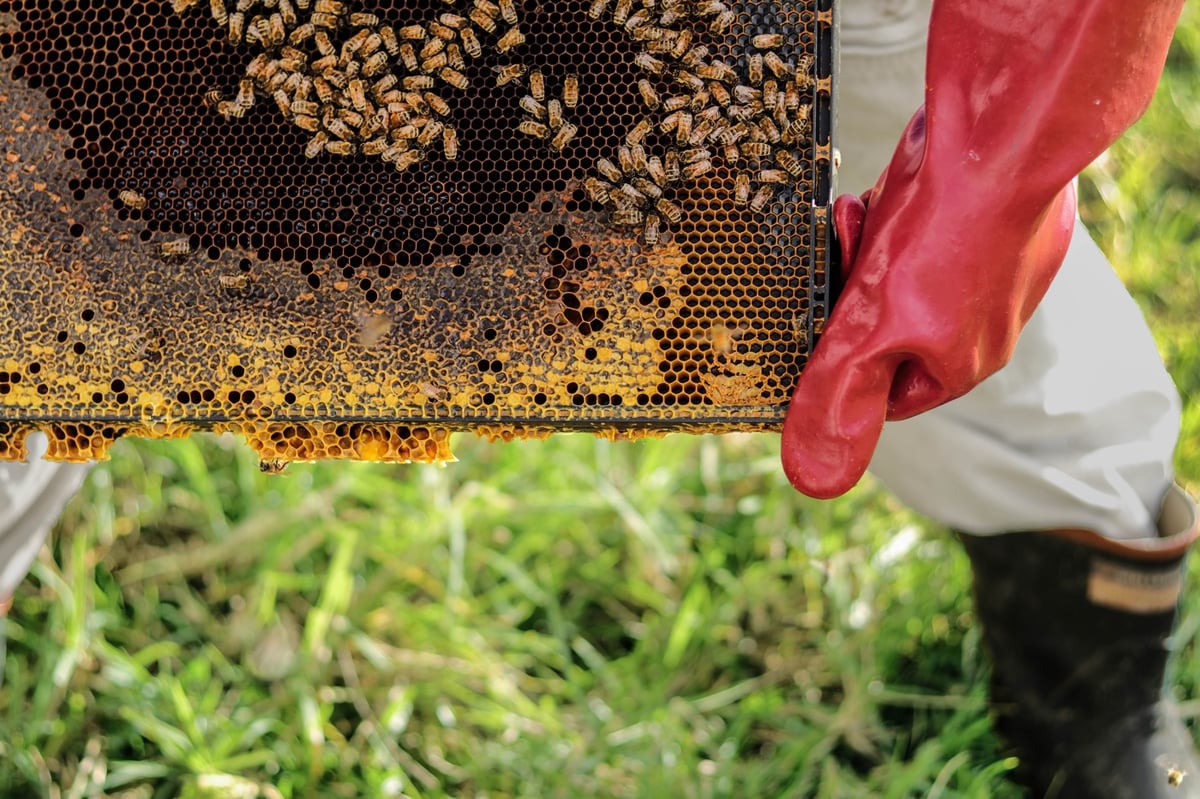Beehives, “bee space,” and Le Corbusier

The beehive design most of us probably imagine when thinking of beekeeping are actually a relatively recent design, having been patented by the clergyman Reverend Lorenzo Lorraine Langstroth in 1852.
One of the reasons this design works is that he understood “bee space,” the gap between panels which allows bees to circulate while preventing them from filling in the whole and making the panels “stick.”
It’s because Langstroth understood “bee space.” Simply put, bee space is a gap of around 6 - 8mm. It is the space that is too large for the bees to fill with propolis, too small to fill with comb but just right for crawling around in. By designing a hive with this exact space between components - between the frames, the frames and the hive walls, and the frames and the roof - it became possible for the frames to remain unstuck and to therefore be removable. The bees built their comb inside the parameters of the wooden frame and regular inspections by the beekeeper kept the frames loose. So, modern beekeeping is premised on the very precise measurement of the body of a honeybee and how it uses space inside a hive.
The author proposes a parallel with architectural modernism, which although a bit stretched, has some value and is a good occasion to look into Le Corbusier’s unité d’habitation.
The fabrication of the hives, their replicability and ease of manufacturing is also an example of modern methods spreading worldwide and overshadowing older, often better adapted, methods.
We see this with the box hives too, as box beehives replaced traditional beekeeping practices in many cultures. In the West mass-produced beehive components are affordable but in many parts of the developing world, where development agencies push modern beekeeping, hive components can be expensive. Whereas making hives from locally sourced and affordable available materials, such a wicker, mud, plastic sheeting and dung is usually far more sustainable. In addition, traditional beekeepers selected apiary types and sites due to the success rates of hives in those locations. Traditional Ethiopian beekeepers, for example, keep hives suspended in trees and claim that there are fewer issues with diseases among the branches than in boxes on the ground. This type of beekeeping also requires healthy forests, so Ethiopian beekeepers know their forests well and are, in many cases, advocates for conservation and biodiversity.
The piece closes on a good question: is this kind of industrialized large-scale beekeeping part of the declining bee population in recent years?





Stay Connected